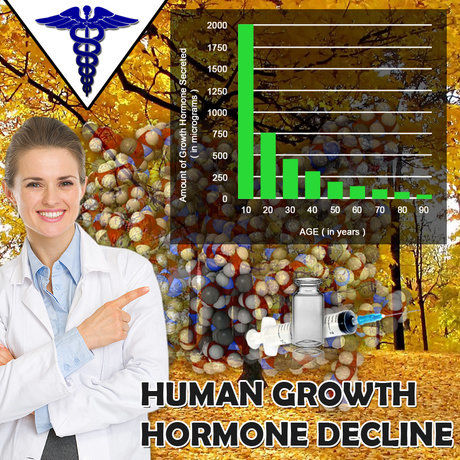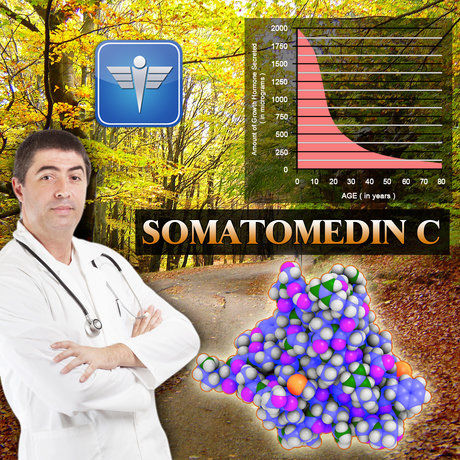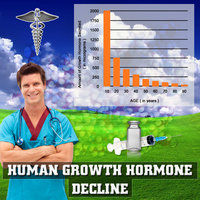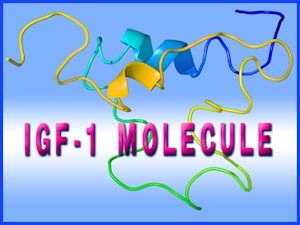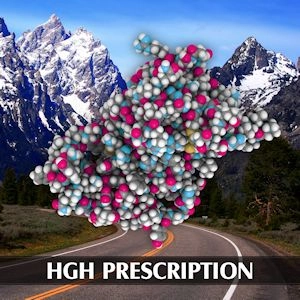Introduction to GnRH Agonist Therapy
Gonadotropin-releasing hormone (GnRH) agonist therapy represents a cornerstone in the management of advanced prostate cancer among American males. By suppressing testosterone production, this treatment effectively slows the progression of the disease. However, the resultant hypogonadism often leads to sexual dysfunction, which can significantly impact the quality of life of patients. This article explores strategies for mitigating these side effects through selective hormone replacement, aiming to balance oncologic efficacy with sexual health.
Understanding the Impact of GnRH Agonists on Sexual Function
GnRH agonists work by initially stimulating the release of luteinizing hormone (LH) and follicle-stimulating hormone (FSH), which in turn increase testosterone levels. This surge is followed by a downregulation of the GnRH receptors, leading to a significant reduction in testosterone. While this is beneficial for controlling prostate cancer, the drastic decrease in testosterone levels can lead to erectile dysfunction, decreased libido, and other sexual health issues. These side effects are particularly distressing for American males, who may place a high value on sexual function as part of their overall well-being.
Strategies for Selective Hormone Replacement
To address the sexual dysfunction associated with GnRH agonist therapy, selective hormone replacement strategies have been developed. These approaches aim to restore sexual function without compromising the therapeutic benefits of testosterone suppression.
1. Intermittent Androgen Deprivation Therapy
Intermittent androgen deprivation therapy (IADT) involves alternating periods of GnRH agonist treatment with periods of hormone recovery. This strategy allows patients to experience intervals of normal testosterone levels, which can help maintain sexual function. Studies have shown that IADT can be as effective as continuous androgen deprivation therapy in managing prostate cancer, while also improving quality of life.
2. Selective Estrogen Receptor Modulators (SERMs)
SERMs, such as tamoxifen, can be used to counteract the effects of hypogonadism on bone health and sexual function. By selectively targeting estrogen receptors, SERMs can help maintain libido and erectile function without increasing the risk of prostate cancer progression.
3. Low-Dose Testosterone Replacement
Low-dose testosterone replacement therapy is another approach that has been explored. By administering minimal amounts of testosterone, it is possible to improve sexual function without significantly raising testosterone levels, thus minimizing the risk of stimulating prostate cancer growth. This method requires careful monitoring and adjustment to ensure it remains safe and effective.
4. Phosphodiesterase Type 5 Inhibitors (PDE5Is)
PDE5Is, such as sildenafil, are commonly used to treat erectile dysfunction. When used in conjunction with GnRH agonist therapy, these medications can help improve sexual function by enhancing blood flow to the penis. While they do not address the underlying hormonal imbalance, they can provide significant symptomatic relief.
Challenges and Considerations
Implementing selective hormone replacement strategies requires a nuanced understanding of the patient's overall health and cancer status. Regular monitoring of prostate-specific antigen (PSA) levels and other cancer markers is essential to ensure that the chosen approach does not compromise the primary goal of cancer control. Additionally, patients should be counseled on the potential risks and benefits of each strategy, allowing them to make informed decisions about their treatment.
Conclusion
GnRH agonist therapy remains a vital tool in the management of prostate cancer among American males. However, the associated sexual dysfunction can significantly impact patients' quality of life. By employing selective hormone replacement strategies such as intermittent androgen deprivation therapy, SERMs, low-dose testosterone replacement, and PDE5Is, it is possible to mitigate these side effects while maintaining effective cancer control. As research continues to evolve, these approaches offer hope for improving the overall well-being of men undergoing treatment for prostate cancer.
Contact Us For A Fast And Professional Response

- Exploring the Therapeutic Potential of Kisspeptin in Men with Hypothalamic Hypogonadism: A Focus on Sexual Function and Desire [Last Updated On: February 22nd, 2025] [Originally Added On: February 22nd, 2025]
- Somatostatin Analogues and Male Sexual Dysfunction: Mechanisms, Evidence, and Management Strategies [Last Updated On: March 2nd, 2025] [Originally Added On: March 2nd, 2025]
- The Impact of Hormonal Balance on Erectile Function: A Comprehensive Guide for Men [Last Updated On: March 7th, 2025] [Originally Added On: March 7th, 2025]
- Exploring Neurosteroid Modulation: Novel Approach to Treating Libido Disorders in Men [Last Updated On: March 8th, 2025] [Originally Added On: March 8th, 2025]
- Exploring Vasopressin Receptor Antagonists: A New Frontier in Treating Sexual Dysfunction in Eugonadal Men [Last Updated On: March 9th, 2025] [Originally Added On: March 8th, 2025]
- Managing Hormonal Imbalance in Men: Aromatase Inhibitors and Sexual Health Considerations [Last Updated On: March 9th, 2025] [Originally Added On: March 9th, 2025]
- Unveiling the Potential of DHEA in Combating Age-Related Sexual Dysfunction in Men: Insights from a Rigorous Clinical Trial [Last Updated On: March 12th, 2025] [Originally Added On: March 12th, 2025]
- Exploring Melatonin's Influence on Circadian Rhythms and Sexual Health: A New Horizon for Hormone Therapy in American Males [Last Updated On: March 13th, 2025] [Originally Added On: March 13th, 2025]
- Evaluating hCG Monotherapy and Testosterone Replacement: Impacts on Erectile Function in Men with Secondary Hypogonadism [Last Updated On: March 15th, 2025] [Originally Added On: March 15th, 2025]
- Vitamin D's Role in Enhancing Sexual Health and Testosterone Levels in American Males [Last Updated On: March 18th, 2025] [Originally Added On: March 18th, 2025]
- Testosterone Therapy Enhances Erectile Function via Endothelial and Nitric Oxide Pathways [Last Updated On: March 18th, 2025] [Originally Added On: March 18th, 2025]
- Clinical Trial Reveals GnRH Modulation Therapy Boosts Sexual Desire in Men with HSDD [Last Updated On: March 19th, 2025] [Originally Added On: March 19th, 2025]
- Genetic Polymorphisms in Androgen Receptors Impact Hormone Therapy for Male Sexual Dysfunction [Last Updated On: March 19th, 2025] [Originally Added On: March 19th, 2025]
- SARMs: A Promising Treatment for Sexual Dysfunction in Aging Males [Last Updated On: March 19th, 2025] [Originally Added On: March 19th, 2025]
- Bioavailable vs. Total Testosterone: Predicting HRT Success in Male Sexual Dysfunction [Last Updated On: March 19th, 2025] [Originally Added On: March 19th, 2025]
- Pharmacokinetics of Testosterone Formulations and Their Impact on Sexual Function in Males [Last Updated On: March 20th, 2025] [Originally Added On: March 20th, 2025]
- Leptin Resistance and Sexual Dysfunction in American Males: Impacts and Management Strategies [Last Updated On: March 20th, 2025] [Originally Added On: March 20th, 2025]
- Selenium's Role in Male Hormonal Health and Sexual Function: Insights and Implications [Last Updated On: March 21st, 2025] [Originally Added On: March 21st, 2025]
- Ghrelin's Role in Appetite and Sexual Dysfunction: Insights for American Males [Last Updated On: March 21st, 2025] [Originally Added On: March 21st, 2025]
- Zinc and Testosterone Synergy: Enhancing Sexual Function in American Males [Last Updated On: March 21st, 2025] [Originally Added On: March 21st, 2025]
- Iodine Deficiency, Thyroid Dysfunction, and Male Sexual Health: Multimodal HRT Solutions [Last Updated On: March 21st, 2025] [Originally Added On: March 21st, 2025]
- Age-Related Kiss1 Expression Decline and Sexual Dysfunction in American Men: Insights and Treatments [Last Updated On: March 22nd, 2025] [Originally Added On: March 22nd, 2025]
- Chromium Supplementation Enhances Insulin Sensitivity and Sexual Function in Men on Testosterone Therapy [Last Updated On: March 22nd, 2025] [Originally Added On: March 22nd, 2025]
- Pituitary Microadenomas: Impact on Sexual Function and Hormone Therapy Outcomes in American Males [Last Updated On: March 22nd, 2025] [Originally Added On: March 22nd, 2025]
- Managing Sexual Dysfunction in Klinefelter Syndrome: Optimizing Hormone Replacement Therapy [Last Updated On: March 23rd, 2025] [Originally Added On: March 23rd, 2025]
- Magnesium Levels Predict Testosterone Therapy Success for Erectile Dysfunction in American Males [Last Updated On: March 23rd, 2025] [Originally Added On: March 23rd, 2025]
- HRT Outcomes for Sexual Dysfunction Post-Traumatic Testicular Injury in American Males [Last Updated On: March 23rd, 2025] [Originally Added On: March 23rd, 2025]
- Phlebotomy and Testosterone Therapy Enhance Sexual Function in Hemochromatosis-Induced Hypogonadism [Last Updated On: March 24th, 2025] [Originally Added On: March 24th, 2025]
- Adrenal Insufficiency in Men: Comparing Glucocorticoid and Testosterone Therapies' Efficacy [Last Updated On: March 24th, 2025] [Originally Added On: March 24th, 2025]
- Comparing Hormone Therapies for Opioid-Induced Endocrinopathy in American Males [Last Updated On: March 24th, 2025] [Originally Added On: March 24th, 2025]
- PADAM and Sexual Dysfunction: HRT's Impact on Aging Males' Sexual Health [Last Updated On: March 24th, 2025] [Originally Added On: March 24th, 2025]
- Chemotherapy-Induced Hypogonadism in American Males: Exploring Hormone Replacement Strategies [Last Updated On: March 24th, 2025] [Originally Added On: March 24th, 2025]
- Calcium-to-Magnesium Ratio Enhances HRT Efficacy in American Men's Sexual Health [Last Updated On: March 24th, 2025] [Originally Added On: March 24th, 2025]
- Testicular Failure vs. Secondary Hypogonadism: Tailoring Hormone Therapy for Sexual Dysfunction [Last Updated On: March 24th, 2025] [Originally Added On: March 24th, 2025]
- Boron Supplementation: Enhancing Testosterone and Sexual Function in Aging American Males [Last Updated On: March 24th, 2025] [Originally Added On: March 24th, 2025]
- Obesity-Related Hypogonadism: Weight Loss vs. HRT Effects on Sexual Health in American Males [Last Updated On: March 24th, 2025] [Originally Added On: March 24th, 2025]
- Mumps Orchitis-Induced Testicular Atrophy: Impact on Sexual Function and Hormone Therapy Efficacy [Last Updated On: March 25th, 2025] [Originally Added On: March 25th, 2025]
- NAFLD in American Males: Hormonal Dysregulation, Sexual Dysfunction, and Multimodal Treatment [Last Updated On: March 25th, 2025] [Originally Added On: March 25th, 2025]
- Managing Sexual Health in American Males with CKD: Optimizing Hormone Replacement Therapy [Last Updated On: March 25th, 2025] [Originally Added On: March 25th, 2025]
- Iron Overload and Hypogonadism: Phlebotomy and HRT for Sexual Health in American Males [Last Updated On: March 25th, 2025] [Originally Added On: March 25th, 2025]
- Varicocelectomy with Hormone Therapy Enhances Sexual Function in American Males [Last Updated On: March 25th, 2025] [Originally Added On: March 25th, 2025]
- Smoking's Impact on Sexual Health: Mechanisms and Mitigation Strategies [Last Updated On: March 25th, 2025] [Originally Added On: March 25th, 2025]
- Copper-to-Zinc Ratio: Predicting Hormone Therapy Success in American Males with Sexual Dysfunction [Last Updated On: March 25th, 2025] [Originally Added On: March 25th, 2025]
- Hormone Replacement Therapy for Post-Orchitis Testicular Atrophy: Impact on Sexual Function in American Males [Last Updated On: March 25th, 2025] [Originally Added On: March 25th, 2025]
- Managing Sexual Dysfunction in Diabetic American Males: Metabolic Control and Hormone Optimization [Last Updated On: March 25th, 2025] [Originally Added On: March 25th, 2025]
- Timing of HRT Crucial for Sexual Function in Males with Delayed Puberty [Last Updated On: March 25th, 2025] [Originally Added On: March 25th, 2025]
- Testicular Torsion's Impact on Sexual Function and Role of Hormone Optimization in American Males [Last Updated On: March 26th, 2025] [Originally Added On: March 26th, 2025]
- Radiation-Induced Testicular Damage: Mitigating Sexual Dysfunction with Targeted Hormone Therapy [Last Updated On: March 26th, 2025] [Originally Added On: March 26th, 2025]
- Abstinence and Hormone Therapy: Enhancing Sexual Function in Alcohol-Affected American Males [Last Updated On: March 26th, 2025] [Originally Added On: March 26th, 2025]
- Cushing's Syndrome in Men: Sexual Function Recovery with Cortisol and Testosterone Therapy [Last Updated On: March 27th, 2025] [Originally Added On: March 27th, 2025]
- Cryptorchidism: Impacts on Sexual Health and Hormone Therapy Solutions [Last Updated On: March 27th, 2025] [Originally Added On: March 27th, 2025]
- Marijuana Use and Its Impact on Male Sexual Function and Hormonal Health [Last Updated On: March 27th, 2025] [Originally Added On: March 27th, 2025]
- Anabolic Steroid-Induced Hypogonadism: Recovery Protocols for American Males' Sexual Health [Last Updated On: March 28th, 2025] [Originally Added On: March 28th, 2025]
- IBD's Impact on Male Sexual Health and Testosterone: Management Strategies [Last Updated On: March 28th, 2025] [Originally Added On: March 28th, 2025]
- Subclinical Hypothyroidism's Impact on Testosterone and Sexual Dysfunction in American Males [Last Updated On: March 28th, 2025] [Originally Added On: March 28th, 2025]
- Comparing Dopamine Agonists and Testosterone for Hyperprolactinemia-Induced Sexual Dysfunction in Men [Last Updated On: March 29th, 2025] [Originally Added On: March 29th, 2025]
- Multiple Sclerosis in Men: Neurohormonal Approaches to Treating Sexual Dysfunction [Last Updated On: March 29th, 2025] [Originally Added On: March 29th, 2025]
- CPAP and Hormone Therapy Enhance Sexual Health in Men with Obstructive Sleep Apnea [Last Updated On: March 29th, 2025] [Originally Added On: March 29th, 2025]
- Rheumatoid Arthritis in Males: Impacts on Sexual Health and Benefits of Combined Therapies [Last Updated On: March 30th, 2025] [Originally Added On: March 30th, 2025]
- Alzheimer's Impact on Sexual Health: Exploring Hormone Therapy Solutions [Last Updated On: March 30th, 2025] [Originally Added On: March 30th, 2025]
- Parkinson's Disease in American Males: Managing Sexual Health and Dysfunction [Last Updated On: March 31st, 2025] [Originally Added On: March 31st, 2025]
- Neuroendocrine Assessment and Hormone Therapy for Post-Stroke Sexual Dysfunction in Men [Last Updated On: April 2nd, 2025] [Originally Added On: April 2nd, 2025]
- HRT as a Promising Solution for SSRI-Induced Sexual Dysfunction in American Men [Last Updated On: April 4th, 2025] [Originally Added On: April 4th, 2025]
- Spinal Cord Injury in American Males: Addressing Sexual Dysfunction Holistically [Last Updated On: April 4th, 2025] [Originally Added On: April 4th, 2025]
- Beta-Blockers and Sexual Dysfunction in American Males: Effects and Hormone Therapy Solutions [Last Updated On: April 8th, 2025] [Originally Added On: April 8th, 2025]
- Statins and Male Sexual Health: Hormonal Impacts and Testosterone Therapy Effectiveness [Last Updated On: April 9th, 2025] [Originally Added On: April 9th, 2025]
- Managing Antipsychotic-Induced Hyperprolactinemia and Sexual Dysfunction in American Males [Last Updated On: April 9th, 2025] [Originally Added On: April 9th, 2025]
- Managing ADT Side Effects: Partial Hormone Replacement for Prostate Cancer Patients [Last Updated On: April 9th, 2025] [Originally Added On: April 9th, 2025]
- Clomiphene Citrate vs. TRT: Effects on Sexual Function and Fertility in Young Men [Last Updated On: April 10th, 2025] [Originally Added On: April 10th, 2025]
- Hormone Modulation Therapies for Recovering from 5?-Reductase Inhibitor-Induced Sexual Dysfunction [Last Updated On: April 10th, 2025] [Originally Added On: April 10th, 2025]
- Radiotherapy-Induced Endocrine Dysfunction: Hormone Therapy for Sexual Health in American Males [Last Updated On: April 10th, 2025] [Originally Added On: April 10th, 2025]
- Aromatase Inhibitors Enhance TRT: Managing Estrogen Side Effects and Preserving Sexual Function [Last Updated On: April 10th, 2025] [Originally Added On: April 10th, 2025]
- Optimizing Sexual Health Post-Prostatectomy with Hormone Replacement Therapy: A Comprehensive Guide [Last Updated On: April 11th, 2025] [Originally Added On: April 11th, 2025]

